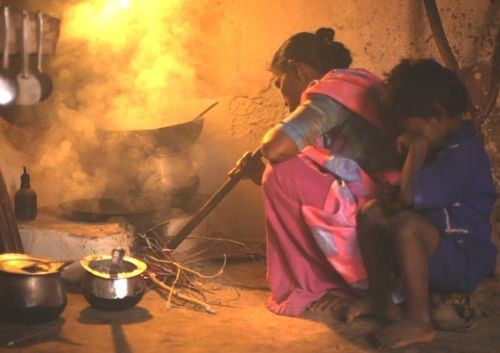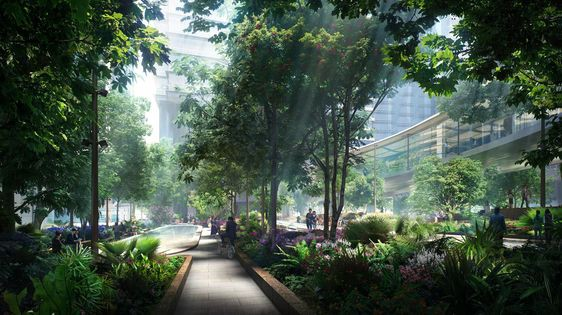A 100-year review of the movement that solved climate change and habitat destruction, and changed environmentalism forever.
Written by David Watson
August 26, 2019

The launch was a disaster. The group’s founding members were already arguing with one another before the movement had even gone live. The media were critical. Politicians were confused. Yet what they launched is central to how we view the world today.
Despite their disagreements, what the founding members did share was a deep love for the natural world. They wanted to protect nature, but they felt that something had gone wrong with environmentalism. Badly wrong.
Who was this ragtag group and what did they want? They called themselves the ecomodernists.

Ecomodernism: what is it?
You can boil ecomodernism down to two simple statements:
What ecomodernists want: for humanity to shrink its impacts on the environment and make more room for nature.
What ecomodernists reject: that the way to do this is to “harmonize with nature”.
The ecomodernists asked some difficult questions: Are the best solutions really the traditional ones? Is natural always better than man-made? Should we expect nature to provide for all our material needs? Is small-scale and local always best for wildlife?
Although it seems like common sense to us now, the launch of ecomodernism was little welcomed at the time. In fact, looking through the archives, many contemporary environmentalists were skeptical that ecomodernism was the answer, and even questioned its supporters’ motives.
.jpg)

2034: the breaking point
By 2034, the world had spent 30 years failing to slow climate change and habitat destruction. The policies weren’t working. With options running out, global leaders were looking for a new approach.
A reminder of how things stood in 2034:
- Large build-out of solar and wind backed up by cheap methane gas in US and EU. Initial CO2 reductions flat-lined, with emissions remaining dangerously high.
- Coal power dominant in India, China, Africa and, amazingly, still huge in Germany.
- Forests, agricultural, and marginal lands cleared for bioenergy crops.
- EU ban on gene-edited food crops. More than 50% of EU food organic (EU effectively imposed same ban on poorer countries by refusing to import their GE crops into Europe).
- Massive Greenland glacial melting events of the late 2020s and the Amazon mass extinctions of 2031 to 2034 left global leaders scrambling for solutions.
Not only did these policies fail in significantly reducing carbon emissions, they tended to place even more pressure on the limited wilderness that remained.
This was especially true in Africa, Asia and Latin America — which at that time were still much poorer than Europe and North America — where the environment suffered due to flawed policy ideas handed down from the rich world.
Jump forward eighty years, and we’ve come a long way. Our ecosystems are now recovering and it’s thanks, in large part, to ecomodernism. So on this one hundred-year anniversary, it’s time to look back and ask: how did ecomodernism get us out of the mess of 2030s?
It taught us to accept the right of all peoples to a better life
Something that seems so obvious to us now, that all peoples of the world deserve access to the highest levels of education, health and prosperity, was not a universal view one hundred years ago. Many rich people in Western countries were happy to deny the benefits of modernity to Africa, Asia and Latin America on the basis that “not everyone wants a modern lifestyle” and that “traditional ways of living should be respected”.



Fears of exponential population growth in Africa and Asia were widespread (with dark, racist undertones), which seems ironic today given the population crash we’re seeing in the 22nd century. It was said that bringing the world’s poorest into modern levels of consumption would doom the environment.
Ecomodernism taught us the reality that no one enjoys poor sanitation, endless toil in the fields or living without access to clean energy. When offered the choice, everyone prefers modernity.
By decoupling energy use from natural processes, we were able to bring almost everyone out of poverty without damaging the planet. Population growth dropped dramatically when we provided economic opportunity to people in developing countries, particularly women.
It taught us the need for clean, energy-dense fuels
The history of human energy use is mostly one of switching to fuels of increasing energy density: from wood (18MJ/kg) and dung (15.5MJ/kg), to coal (30MJ/kg), to whale oil (40MJ/kg) to mineral oil (45MJ/kg), to gas (55MJ/kg), to uranium (2,000,000MJ/kg) and hydrogen (90,000,000MJ/kg). These energy transitions only take place when there are suitable substitutions available.
England used to be covered in forest. By the end of the 16th century, almost all of it had been cleared away, in large part for fuel. The expansion of coal mining provided a substitute for trees, but there was a problem: coal was dreadfully unpopular.
Coal was strange. Coal was different. It was smelly. It was toxic. Imagine giving a medieval peasant a rock from the ground that you could burn for fuel. Preachers even labelled coal the “devil’s excrement”, dug as it was from the bowels of the Earth. Eventually, there were so few trees left that a switch to coal was inevitable, and the invention of the chimney dealt with the worst of the fumes. That switch allowed the trees to grow back. The rise of coal also laid the foundations for the first Industrial Revolution, which started humanity down a path that has lifted billions out of poverty.
Throughout the 19th and 20th centuries we killed hundreds of thousands of whales to harvest their oily blubber. The oil went into everything: candles, machine lubricants, soap and even makeup. Again, to quit whale oil we needed a substitute. This time, it was the economic extraction of oil from the ground. Yes: oil wells saved the whale from extinction.

The move in the 2010s and 2020s towards wind, solar and biomass energy broke the golden rule of energy density. After centuries of reducing our impact on natural systems despite rising energy consumption, these energy forms “recoupled” our consumption to sources that had to be harvested over very large areas of planet. Not only that, but these technologies could not fully substitute for oil and gas.
The good news was that we did already have a substitute: nuclear power. The bad news was that nuclear, like coal before it, was seen as the devil’s excrement. The climate crisis, air pollution, carbon taxes, habitat destruction and energy poverty inevitably drove societies towards nuclear, but it took the ideas of ecomodernism to help it along.
When we switched to nuclear we eliminated CO2 pollution and no longer needed damaging fossil fuel extraction industries.



Ecomodernism urged the world to take a fresh look at nuclear power. It ticked all the boxes: energy-dense and abundant fuel, low land use, no carbon emissions, no other atmospheric pollution, tiny waste volumes, flexible, dispatchable and affordable.
It was a joint Franco-Chinese initiative that made the case for an international, coordinated deployment of nuclear at the UN climate crisis talks of 2034. This led to a relaunch of the UN “Atoms for Peace” programme, and the designing of a series of open-source, factory-built, nuclear reactors to produce electricity, carbon-neutral fuels for cars and planes, district heating for homes and low-carbon desalinated water.






It taught us to minimize our material and land footprint
Ecomodernism taught us to use technology to reduce pressure on the land. That meant tackling agricultural land use, both for crop farming and livestock pasture. It’s hard to picture now given the resurgence of global forest cover these last forty years, but by the 2020s around half of all habitable land was being used for agriculture.

The first ecomodernist win was providing rich countries an alternative to meat and dairy, which are the most land-hungry food groups. Eating less meat became a whole lot easier with the development of synthetic meats based on vegetable proteins. Gene-edited proteins developed in the US lent a really meaty flavour that helped many “carnivores” give up meat almost entirely.
The second ecomodernist win was global acceptance that new technology such as gene-edited crops and indoor vertical farming (powered with clean energy) allowed cropland to be freed up for massive rewilding projects.



It taught us that small and local has its place
Ecomodernists recognised that urban sprawl was an inefficient, land-hungry way to design the places we live in. It baked in heavy car use and led to isolated communities without nearby schools, shops, sports centres or hospitals.
When it comes to urban planning: small and local is beautiful. Unlike traditional greens who favoured “off-grid” rural living, ecomodernists believed cities could be both densely-populated and green. It just takes planning: a network of affordable public transport, priority given to pedestrians and cyclists, well-built apartment blocks and townhouses, and urban green spaces.




But that big and global is important too
Traditional greens had long fought against globalisation. Ecomodernists recognised the efficiency of global markets to produce what we need with the minimal impact on the planet. For instance, the romantic idea of low-intensity, small-scale farming was eventually abandoned once ecomodernists showed “that agricultural intensification means we can grow more food, more consistently, on less land, using less water, wasting less fertilizer and emitting fewer greenhouse gases”. Small-scale subsistence farming was also shown to be a poverty trap, with a move off the farm and into cities providing the most reliable route to prosperity.
What does the future hold for ecomodernism?
Are ecomodernism’s ideas still valid today? It would appear so. Much of the damage caused during the 20th and 21st centuries still remains. Forests will take centuries to grow back. Coral reefs are showing signs of recovery, but fish stocks remain depleted. Natural processes are returning to pasture lands following reintroduction of native grazing animals and top predators like wolves, but there’s still so much work to be done. We can say, however, that with ecomodernism we have the tools and, more importantly, the mindset, to meet that challenge head on.
Thanks to Ben Heard for introducing me to the story of how oil saved the whale.

